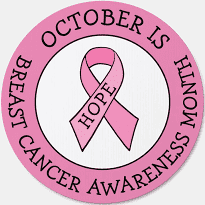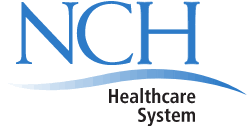October is Breast Cancer Awareness Month
After Your Mammogram: Understanding Your Results

Dr Priyanka Handa M.D.
A mammogram is used to check for breast cancer in women who have no signs or symptoms of the disease. It is a series of images of breast tissue made by low radiation-ray beams.
“Mammogram results can help find breast cancer one to three years before a lump can actually be felt in the breast, making it one of the most effective ways to find and treat breast cancer early,” says Dr. Priyanka Handa, MD, Director of Breast Imaging at NCH Imaging.
Below is some information that will help you understand your mammogram results.
Only a doctor (radiologist) can interpret a mammogram. Radiologists take the information and sum it up in one number score and send the findings to your healthcare provider. Your mammogram results will be given a score of 0 through 6. This rating system is known as the Breast Imaging Reporting and Data System (BI-RADS). This system makes communication and follow-up after the tests much easier. Your healthcare provider will talk with you about your mammogram’s category and what needs to be done next.

Making sense of it all
The six scores for breast imaging results are:
0: More information or imaging is needed to assign a score. Sometimes magnification is necessary to characterize what was initially seen.
1: This means your mammogram is negative. No signs of cancer were found, and you should continue with routine screenings.
2: This means your mammogram is normal with no apparent cancer, but other non-cancerous findings such as cysts were found. Continue routine screenings.
3: This means your mammogram is probably normal and the findings are most likely benign and does not yet warrant a biopsy. There is a very small chance of early and unlikely to spread breast cancer. You will likely need a follow-up mammogram in six months.
4: This means the findings are suspicious. Your provider may advise that you should have a biopsy.
5: The findings mean you likely have cancer. A biopsy is strongly advised.
6: This means you have already been diagnosed with breast cancer by biopsy and the pathologist has confirmed the diagnosis.
BI-RADS Breast density reports
The BI-RADS report will include a description of how much fibrous and glandular tissue is in the breasts, as opposed to fatty tissue. This is called breast density. The denser the breasts, the harder it can be to see abnormal areas on mammograms.
Supplemental whole breast screening ultrasound can help detect additional cancers in women with dense breast tissue with no cancer detected on mammogram. Make sure your health provider knows your health history and report anything in your history that increases your risk for breast cancer.
“As you age, your chances of getting breast cancer increase,” says Dr. Handa. “If you notice a change in your breasts, such as a lump, skin changes, nipple changes or discharge, call your physician right away.”
For questions regarding your mammogram or to make an appointment at one of the five convenient NCH Imaging locations, call 239-624-4443 or for more information visit nchmd.org




Leave a Reply
Want to join the discussion?Feel free to contribute!